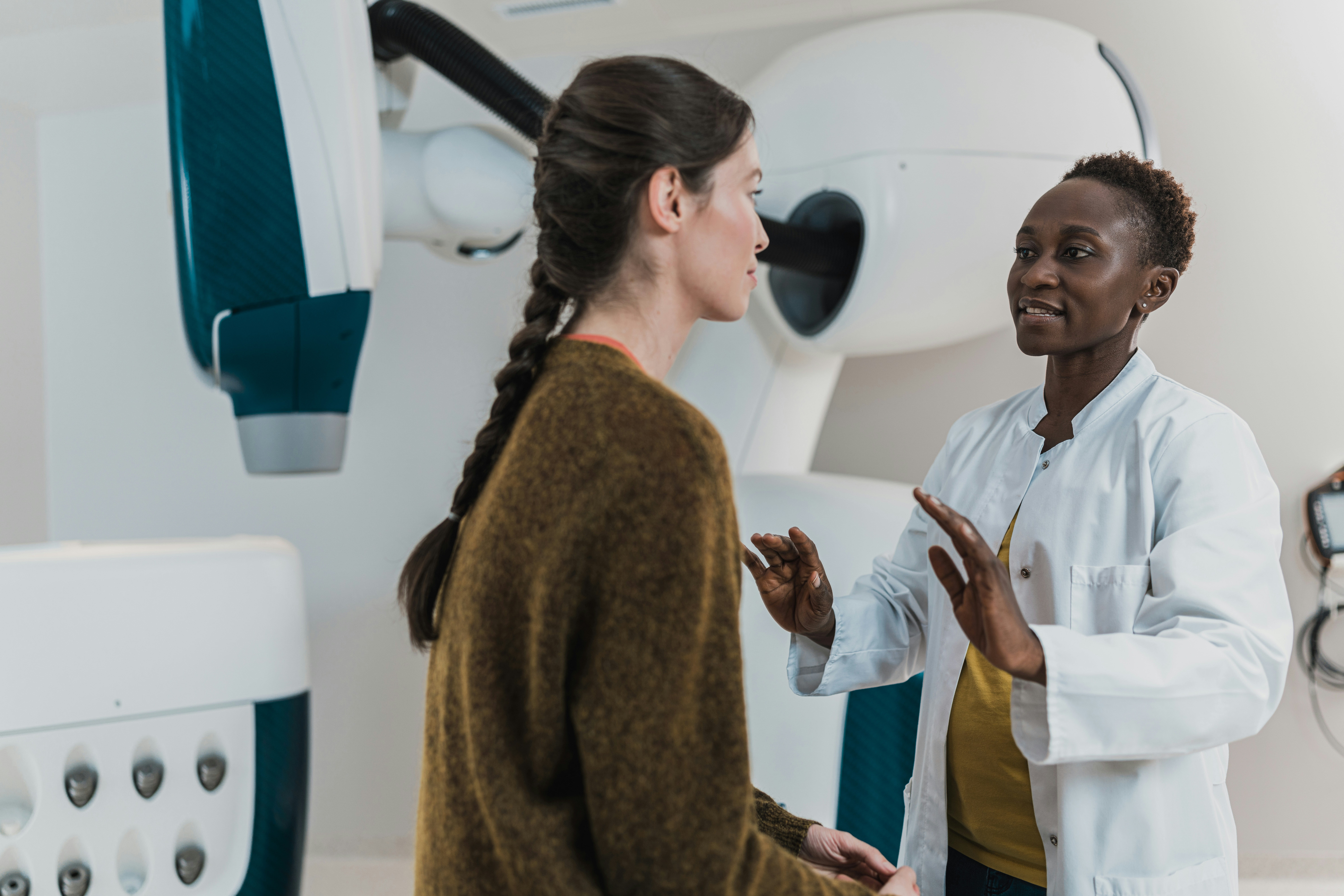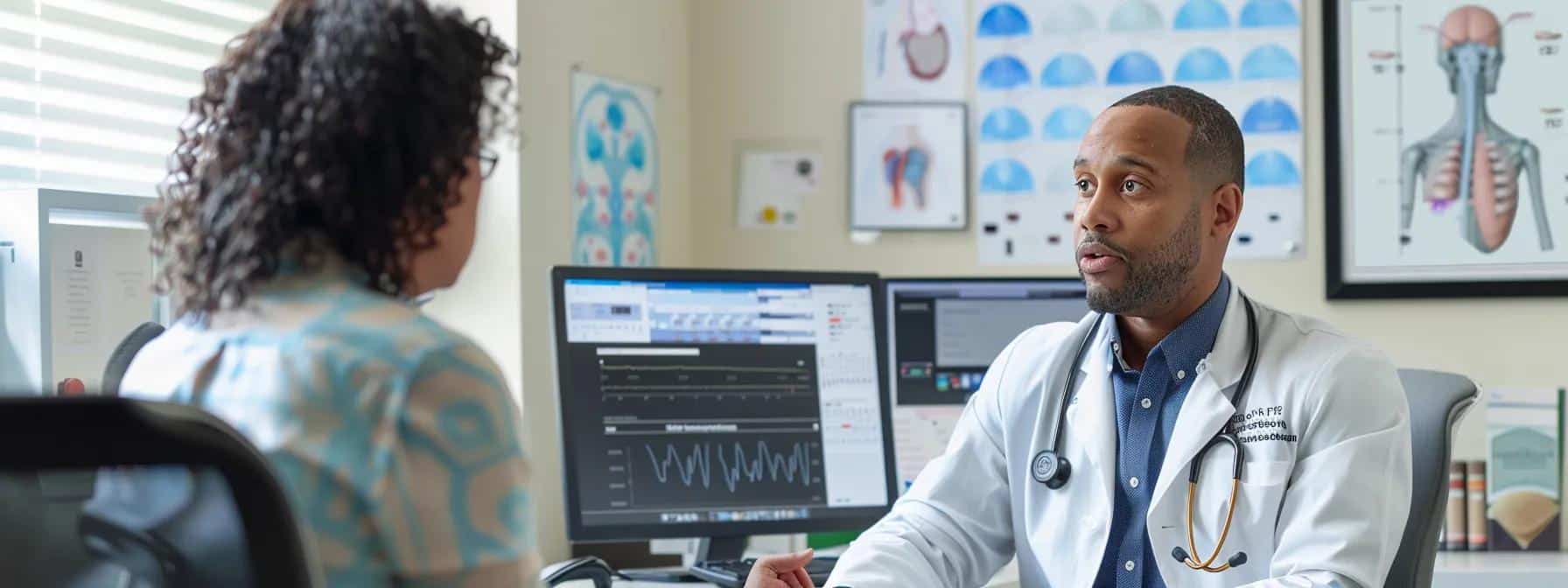Endometriosis is a complex condition that affects more than just the pelvic region—it can also cause chronic back pain that disrupts daily life. The connection between endometrial lesions, inflammation, and nerve irritation helps explain this persistent discomfort. Understanding these mechanisms is key to getting proper treatment and relief. At the Endometriosis Center of Excellence, patients receive personalized care designed to manage pain holistically. Led by Dr. Rachael Haverland, the clinic specializes in diagnosing and treating endometriosis-related complications with minimally invasive techniques. This guide explores how endometriosis causes back pain and the best ways to manage it.
Key Takeaways
- Endometriosis back pain is often caused by inflammation, nerve irritation, and pelvic adhesions pulling on lower back structures.
- Hormonal changes, diet, and stress are common triggers that can worsen back pain during the menstrual cycle.
- Diagnosis typically involves medical history, imaging, and may require laparoscopy for confirmation.
- Treatment includes medications, hormone therapy, physical therapy, and surgery when necessary.
- Dr. Rachael Haverland and the team offer tailored, non-opioid pain management strategies for long-term relief.
What Is Endometriosis and How Does It Cause Back Pain?

Endometriosis is a complex and often misunderstood condition that can impact many aspects of a woman’s life, including causing persistent and sometimes severe back pain. The link between endometrial lesions and the nerves in the pelvis plays a key role in this discomfort. Understanding the nature of the condition and how it affects the spine and surrounding muscles is essential to managing symptoms. At the Endometriosis Center of Excellence, specialists like Dr. Rachael Haverland provide individualized care to help patients better understand and treat these symptoms. The sections below explore the causes, diagnosis, and management of endometriosis-related back pain.
What Is Endometriosis? Definition, Causes, and Prevalence
Endometriosis is a chronic inflammatory condition where tissue similar to the uterine lining grows outside the uterus, commonly on the ovaries, fallopian tubes, or pelvic peritoneum. This misplaced tissue bleeds cyclically during menstruation, causing scar tissue and adhesions that tether organs and trigger inflammation and pain. Although its exact cause is not fully understood, theories include retrograde menstruation (where menstrual blood flows backward), immune dysfunction, genetic predisposition, and environmental toxin exposure.
Approximately 10% of women of reproductive age worldwide are affected, with symptoms ranging from pelvic pain to infertility. Beyond pelvic pain, endometriosis can also cause gastrointestinal discomfort, fatigue, and notably back pain due to the inflammatory environment affecting nerves in the lower back.
How Does Endometriosis Lead to Back Pain? Mechanisms Explained
Multiple mechanisms can explain back pain in endometriosis. When endometrial tissue implants near pelvic nerves, it creates inflammation that irritates these nerves, resulting in pain that may radiate to the lower back. Hormonal fluctuations—especially in estrogen—can worsen inflammation and increase pain sensitivity over the menstrual cycle. Adhesions from scar tissue may pull on ligaments and alter pelvic and spine alignment, further stressing the back. Moreover, chronic pain can lead to stress and depression, which not only lower pain thresholds but also contribute to a cycle of heightened pain perception.
What Are the Main Triggers of Endometriosis Back Pain?

Certain triggers can intensify endometriosis symptoms, especially those related to lifestyle, diet, and hormonal changes. Back pain tends to flare during menstruation or times of elevated estrogen levels. Inflammatory foods and unmanaged stress may also heighten pain sensitivity. Understanding these triggers helps patients and providers develop more targeted management strategies. Identifying and minimizing personal pain triggers is a key part of holistic care.
How Do Hormonal Fluctuations Trigger Back Pain in Endometriosis?
Hormonal changes, particularly shifts in estrogen levels, play a central role in triggering endometriosis symptoms. Elevated estrogen can promote the growth of ectopic endometrial tissue and increase inflammatory cytokine production. Fluctuations during the menstrual cycle often result in predictable periods of worsening back pain. These hormonal changes also affect the central nervous system’s regulation of pain, making nerves more sensitive even if the underlying tissue damage remains constant.
Can Diet Influence Endometriosis-Related Back Pain?
Diet is a modifiable factor that can help reduce systemic inflammation. Diets high in omega-3 fatty acids (found in fish, walnuts, and flaxseeds) and antioxidants (from berries, nuts, and leafy greens) may lower inflammation and pain. Conversely, high intake of red meat, processed foods, and sugary high-glycemic foods can increase inflammation and stimulate estrogen production, worsening endometrial growth. In addition, a healthy gut microbiome promoted by probiotics (yogurt, kefir) may help balance hormone metabolism. Many patients report better pain control when adopting an anti-inflammatory diet.
How Does Stress Affect Endometriosis Back Pain?
Stress is a powerful trigger for pain. It activates the sympathetic nervous system and increases cortisol and adrenaline, which in turn amplify inflammation. Stress also reduces the body’s natural ability to manage pain by impairing sleep quality and weakening immune responses. When stress leads to poor sleep and increased muscle tension, back pain can worsen significantly. Techniques such as mindfulness meditation, yoga, and cognitive behavioral therapy (CBT) can help lower stress, improve sleep, and reduce overall pain levels.
How Is Endometriosis Back Pain Diagnosed?

Diagnosing endometriosis-related back pain requires a multifaceted approach because symptoms overlap with many other conditions. Providers begin by reviewing a detailed medical history and performing targeted physical exams. Advanced imaging tools like MRIs help visualize internal structures and assess the extent of endometrial spread. If needed, laparoscopy offers a definitive diagnosis by directly examining pelvic organs. Early and accurate diagnosis improves long-term outcomes and quality of life.
What Medical History and Physical Exams Are Used?
Diagnosis of endometriosis back pain begins with a detailed medical history that documents menstrual patterns, pain characteristics, and any other related symptoms such as pelvic pain or gastrointestinal issues. Physical examinations often include palpation of the abdomen and pelvic region, and tests to see if certain movements trigger back pain. This initial evaluation helps distinguish endometriosis from other conditions like herniated discs or musculoskeletal disorders.
Which Imaging Techniques Help Diagnose Endometriosis Back Pain?
Imaging studies are essential to support the diagnosis. Transvaginal ultrasound is commonly used first as it can detect ovarian endometriomas. Magnetic resonance imaging (MRI) provides a detailed view of pelvic structures and can reveal deep infiltrating endometriosis that might affect nerves. In some cases, computed tomography (CT) scans are employed, especially when bony structures need evaluation. Because endometriosis lesions can be small and scattered, imaging results are always correlated with clinical findings.
When and How Is Laparoscopy Used for Diagnosis?
Laparoscopy is considered the gold standard for diagnosing endometriosis. This minimally invasive surgical procedure allows doctors to directly view the pelvic organs and take tissue samples if needed. It is usually reserved for cases where non-invasive methods have been inconclusive or when severe symptoms persist. Although laparoscopy carries some risks, it not only confirms the diagnosis but can also offer immediate treatment by removing problematic tissue.
What Are the Challenges in Diagnosing Endometriosis Back Pain?
Diagnosing endometriosis back pain can be challenging because its symptoms overlap with many other conditions. Lesions are often small and hard to detect even with advanced imaging. The subjective nature of pain adds further complexity since pain intensity can vary widely between individuals. These challenges often require a combination of detailed medical history, physical examination, imaging, and sometimes laparoscopy to arrive at an accurate diagnosis.
What Are the Best Treatment Options for Endometriosis Back Pain?

There is no one-size-fits-all approach when it comes to treating endometriosis back pain. Patients benefit from a mix of medication, lifestyle adjustments, and sometimes surgical intervention. Treatments aim to reduce inflammation, relieve nerve pressure, and manage hormonal activity. Each treatment plan is tailored based on the patient’s symptoms, reproductive goals, and overall health. A combination of medical and holistic therapies often yields the best results.
How Do Medications Help Manage Endometriosis Back Pain?
Medications are a cornerstone in reducing endometriosis back pain. Nonsteroidal anti-inflammatory drugs (NSAIDs) help mitigate pain by blocking inflammatory chemicals like prostaglandins. Hormonal therapies, including oral contraceptives, progestins, and GnRH agonists, work by lowering estrogen levels, which slow down the growth of endometrial tissue and reduce inflammation. In some cases, aromatase inhibitors are used for further estrogen suppression. Treatment is highly individualized based on symptom severity, patient age, and reproductive goals.
When Is Surgery Recommended for Endometriosis Back Pain?
Surgery is usually considered when conservative treatments fail to provide sufficient relief. For patients with extensive endometrial lesions and adhesions, surgical removal via laparoscopic surgery can alleviate nerve pressure and significantly improve symptoms. Although surgery is not a cure, it can greatly reduce pain and improve quality of life, especially when combined with other treatments such as medication and physical therapy.
What Alternative Therapies Can Relieve Endometriosis Back Pain?
Many patients benefit from complementary therapies alongside conventional treatment. Acupuncture may improve blood flow and reduce inflammation, while physical therapy can enhance flexibility and strengthen core muscles to relieve mechanical strain on the back. Other alternative approaches include massage therapy, dietary supplements (like curcumin or ginger extract), and herbal remedies that help balance hormones. Mind-body techniques such as mindfulness meditation and yoga not only reduce stress but also help manage pain.
How Can You Manage and Live Well With Endometriosis Back Pain?

Living with endometriosis back pain involves more than just medical treatment—it requires a holistic lifestyle strategy. Small daily changes can lead to lasting relief and improved function. This includes attention to diet, stress, posture, and sleep quality. Education and empowerment help patients take control of their health. With the right support, many women successfully manage symptoms and regain quality of life.
What Lifestyle Modifications Help Reduce Back Pain?
Lifestyle changes can make a significant difference. Regular low-impact exercise (such as walking, swimming, or yoga) helps strengthen back muscles and improve flexibility. Maintaining a healthy weight through balanced nutrition reduces mechanical strain on the back. Adopting proper posture at work and home, along with selecting an ergonomic mattress, can also lessen pain. Additionally, staying well-hydrated and ensuring sufficient quality sleep are crucial for overall recovery and pain management.
How Can Stress Reduction Improve Endometriosis Symptoms?
Reducing stress plays an important role in managing endometriosis symptoms. Techniques like mindfulness meditation, deep-breathing exercises, and yoga help lower stress hormone levels and relax tense muscles, thereby reducing both back and pelvic pain. Group therapy and support networks further help patients feel understood, lowering the emotional impact of chronic pain. As stress decreases, hormone balance may improve, contributing to a reduction in endometrial tissue growth and associated inflammation.
Frequently Asked Questions
What Does Endometriosis Back Pain Feel Like?
Endometriosis back pain is usually a dull, deep ache in the lower back, often worsening during periods. It can radiate to the hips or legs and may resemble sciatic pain. Dr Rachel carefully evaluates these patterns to differentiate them from muscle or spine issues and ensure accurate diagnosis.
Can Endometriosis Back Pain Be Prevented?
While endometriosis itself can’t be fully prevented, symptoms like back pain can be managed early. Hormonal treatments, anti-inflammatory diets, and lifestyle changes help reduce flare-ups. Doctors may offer personalized plans to minimize pain and prevent symptom progression.
When Should You See a Specialist for Endometriosis Back Pain?
See a specialist like Dr Rachel if back pain:
- Gets worse around your period,
- Affects daily life,
- Doesn’t improve with basic treatments,
- Comes with pelvic pain or infertility.
Dr Rachel provides early diagnosis and targeted care for lasting relief.
How Long Does It Take to Diagnose Endometriosis Back Pain?
Diagnosis can take several years—commonly between 7 to 10—because symptoms often mimic other conditions. However, with focused care, diagnostic delays can be minimized. Dr Rachel may use a combination of patient history, physical exams, imaging (like ultrasound or MRI), and sometimes diagnostic laparoscopy to confirm endometriosis more promptly and accurately.
Are There Effective Non-Surgical Treatments for Endometriosis Back Pain?
Yes, several non-surgical treatments can effectively manage endometriosis-related back pain. These include:
- Hormonal therapies to suppress menstrual cycles,
- Anti-inflammatory medications,
- Physical therapy focused on pelvic alignment and mobility,
- Dietary changes and supplements,
- Pain management plans tailored to individual needs.
Conclusion
Managing endometriosis back pain starts with understanding how it’s linked to pelvic inflammation and hormonal changes. With proper diagnosis and a tailored treatment plan, many women can experience significant relief and improved quality of life. From dietary adjustments to surgical excision, a combination of therapies works best for long-term symptom control. At the Endometriosis Center of Excellence, Dr. Rachael Haverland provides compassionate, expert care to help patients reclaim their comfort. Her minimally invasive approach and dedication to non-opioid solutions set a high standard in endometriosis treatment. Living well with back pain from endometriosis is possible—with the right support and strategy.

